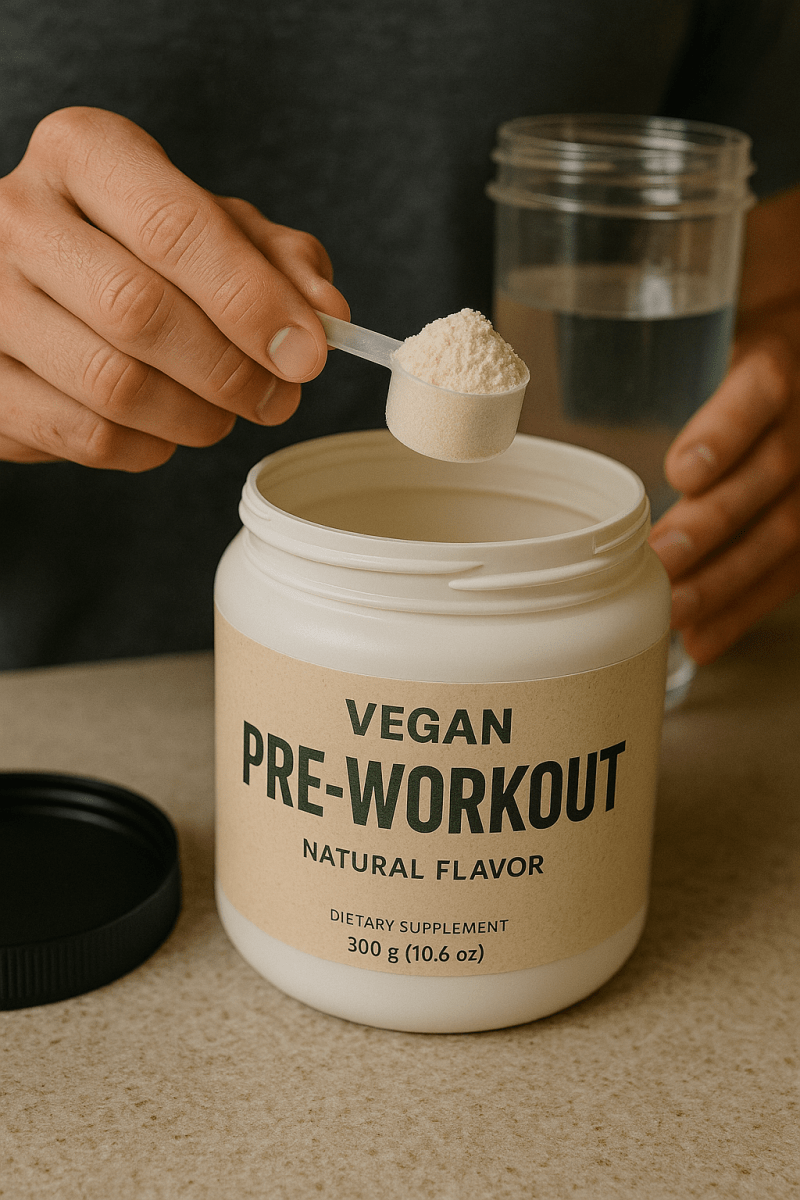
Calf Muscle Tear Recovery [2025 Guide]
If you’ve ever experienced a sharp pain in your lower leg mid-workout or during a friendly five-a-side, you might have suffered a calf muscle tear. This common injury can set back your training and disrupt even the most consistent routines. Before exploring calf muscle tear recovery, it’s important to understand what’s actually happening in your body.
The calf is made up of two main muscles: the gastrocnemius and the soleus. A calf muscle tear, sometimes called a strain, happens when one of these muscles is overstretched or overloaded, leading to small (or sometimes significant) muscle fibre damage. Calf tears are generally classified into three grades:
- Grade 1: Mild stretching or microtearing of the muscle with minimal loss of function.
- Grade 2: More significant damage and loss of strength but not a complete rupture.
- Grade 3: A severe or complete tear of the muscle, often accompanied by a popping sound and major difficulty moving the foot.
The approach you take to muscle recovery depends on the severity of the injury. Regardless of grade, effective calf muscle tear recovery is crucial to prevent recurrence and get back to full strength.
The First Steps to Calf Muscle Tear Recovery
Once you suspect a calf muscle tear, the steps you take in the early hours and days can make all the difference. In the UK, NHS guidance recommends the “POLICE” protocol (Protection, Optimal Loading, Ice, Compression, Elevation) as a go-to for muscle injuries. Here’s how to put this into practice:

- Protection: Reduce movement to prevent further damage. Avoid loading the calf with body weight if the pain is significant.
- Optimal Loading: Rather than complete rest, gentle movement and gradual loading as pain allows will promote faster muscle healing and aid how to speed up muscle strain recovery.
- Ice: Applying a cold compress wrapped in a towel to the area can ease pain and reduce swelling within the first 48 hours. Never apply ice directly to skin.
- Compression: A bandage can help manage swelling, but make sure it’s not too tight — you don’t want to cut off circulation.
- Elevation: Raising the leg above heart level supports fluid drainage and controls swelling.
Avoid massaging the area in the first 48 hours, as this can worsen bleeding and inflammation. When in doubt, check the latest NHS advice on muscle strains for UK evidence-based recommendations. For severe pain, complete loss of function, or heavy bruising, always consult a healthcare professional straight away — you might need more structured treatment or imaging.
Managing Pain and Swelling
It’s standard to feel soreness, swelling, and bruising after a calf tear. Over-the-counter pain relief such as paracetamol or ibuprofen can help if suitable for you. Just be aware of NHS advice on responsible painkiller use, and avoid using medication as an excuse to return to intense activity too soon. Early movement is important, but forcing your muscle to work while it’s still recovering risks making the tear worse.
Active Recovery
After a few days, once pain and swelling begin to improve, it’s time to shift from rest to active rehabilitation. Gradually loading the calf is vital for the muscle fibres to repair and rebuild stronger. Well-researched protocols agree that the best calf muscle tear recovery outcomes come from staged exercise progression. Here’s how to do it safely:
Early Stage (Pain-Free Range)
- Gentle Ankle Movements: Slowly flex and point your toes (ankle pumps) to maintain blood flow and prevent stiffness.
- Toe Tapping: While seated, lightly tap your toes on the floor for short bursts to stimulate calf activity without overloading it.
Intermediate Stage (Building Strength)
- Seated Calf Raises: Sit with your foot flat on the floor. Lift your heel, hold for a second, then lower. Repeat short sets as comfort allows.
- Resistance Band Plantar Flexion: Use a band to gently press your foot downwards against slight resistance to activate the calf without overload.
Advanced Stage (Return to Weight-Bearing)
- Standing Calf Raises: When you can walk without a limp and pain is manageable, graduate to standing calf raises. Start with bodyweight only on the uninjured side, progress to both legs, then just the injured leg.
- Dynamic Movements: When cleared by a physiotherapist, progress to gentle hops or light jogging. The goal is to restore power and functional strength as you approach full recovery.
Diet and Lifestyle: Supporting Calf Muscle Tear Recovery from Within
Optimising your daily habits gives your recovering muscle a fighting chance. Muscle recovery isn’t just about exercises or rest; what you put into your body plays a massive part. According to the British Nutrition Foundation, a well-balanced diet, rich in protein, vitamin C, and minerals like magnesium and calcium, helps support muscle repair and overall health.

- Protein: Aim for regular protein sources throughout the day. Lean meats, dairy, eggs, beans, and pulses top up amino acids essential for rebuilding damaged muscle fibres.
- Vitamin C: Citrus fruits, berries, and vegetables support collagen formation. This strengthens connective tissue during muscle recovery.
- Minerals: Magnesium and calcium help contract and relax your calf muscle fibres. Leafy greens, nuts, seeds, and dairy are key sources.
Don’t overlook hydration. Water supports circulation, nutrient delivery, and removal of waste. Aim for at least 6–8 glasses daily, more if you’re sweating or active. Quality sleep (at least 7–9 hours for most adults) is also critical as most muscle repair happens overnight.
What to Avoid During Recovery
- Smoking and Excessive Alcohol: These limit blood flow and delay healing, making it harder for your muscle to recover at full speed.
- Crash Dieting or Undereating: Your body needs energy and nutrients to rebuild. Dramatically cutting calories or skipping meals can slow down recovery progress.
- Overtraining: Attempting to push through pain or doubling down on unaffected muscle groups can cause compensatory injuries. Listen to your body’s feedback and adapt your routine accordingly.
While you’re working towards full calf muscle tear recovery, a structured return to training is key to avoid future setbacks. Research and NHS sources highlight that the highest risk of recurrence is in the first few weeks after returning. To reduce this risk, combine patience, targeted rehab, and smart progression.
Signs You’re Ready for More Intense Activity
Before diving back into running, heavy training, or sports, make sure:
- You can walk briskly and climb stairs with no limp or significant pain.
- Calf strength on both legs feels nearly equal (test with single-leg calf raises).
- You can jog lightly, hop, or change direction without your calf feeling weak or unstable.
- There’s no residual swelling or bruising at the injury site after gentle activity.
Working with a physiotherapist, personal trainer, or sports rehab professional can provide an extra layer of safety and accountability. They’ll spot compensatory movement patterns and help tailor your ongoing strength and mobility plan.
Injury Prevention Strategies for the Future
- Regular Warm-Up: Focus on dynamic stretches and light cardio to get your calves ready to work.
- Strengthen Surrounding Muscles: Training your glutes, hamstrings, and ankles can take pressure off your calves. Functional lower body training minimises the risk of future strains.
- Monitor Training Volume and Intensity: Increase weight or running distance gradually (aim for no more than 10% increase per week).
- Integrate Flexibility Work: Calf stretches, foam rolling, and mobility work should be part of your regular routine — not just during rehab.
FAQs: Calf Muscle Tear Recovery
How long does calf muscle tear recovery usually take?
Recovery time depends on the severity of the tear. Mild strains may improve within a couple of weeks, while more severe or complete tears can take several months. Following NHS and physiotherapist advice ensures you don’t push too hard or too soon.
Should I see a doctor or physio for a calf muscle tear?
If you notice a sudden pop, can’t walk, the pain is extreme, or swelling/colour changes spread rapidly, speak to a healthcare professional without delay. Even for milder strains, getting a physiotherapist’s assessment can boost your recovery plan and spot underlying issues before they become chronic.
What are the biggest mistakes with calf muscle tear recovery?
- Rushing back into training before the calf is ready.
- Ignoring persistent pain, swelling, or weakness.
- Skipping the rehab stages and only resting (lack of active recovery).
- Neglecting diet or sleep, both crucial for healing.
Are there warning signs my recovery is going too slowly?
If your calf hasn’t improved in flexibility or strength after a few weeks, or you notice new symptoms, it’s time to get a professional assessment. Chronic pain or repeated tears need a personalised, structured plan that may involve scans or more tailored therapy.


